Name: Kate MacDowell
Which came first in your life, the science or the art?
The art. I started studying ceramics in evening classes at the local art school and community college shortly after returning from living and traveling overseas in India and Europe. I have a Master’s in Teaching English Literature, and in the past have produced websites for high tech companies, taught high school English, and worked at a meditation retreat center in India. My first sculptural work in clay sprung out of narrative poems I’d enjoyed as an English teacher, but soon I began exploring environmental case studies based on online reading about threatened species and environmental impacts such as climate change. Now, my work often explores our problematic relationship with the natural environment.

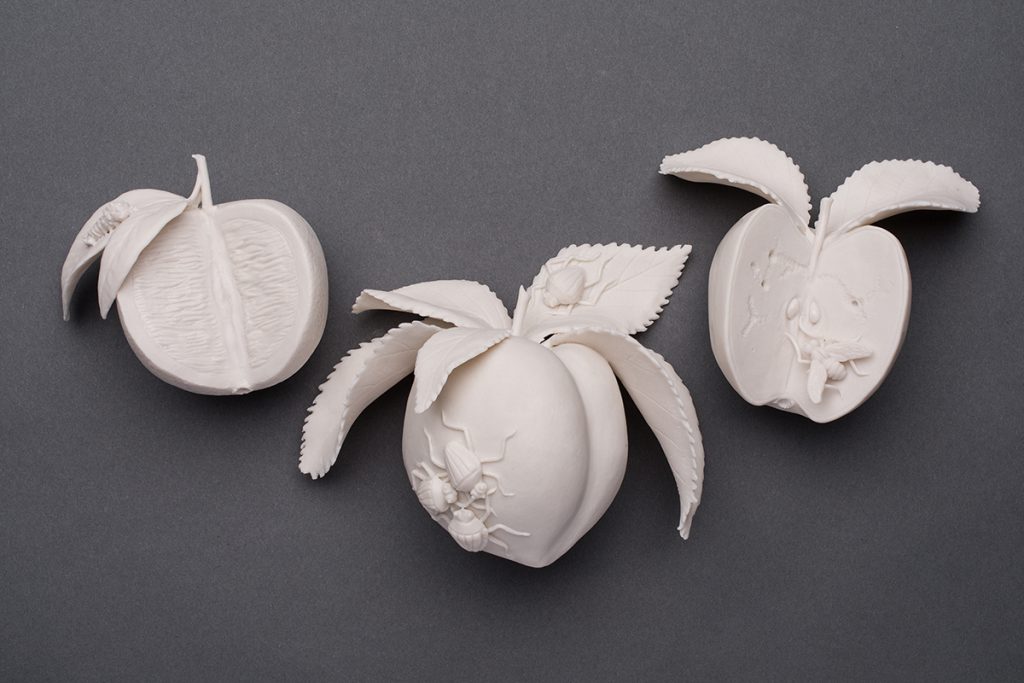
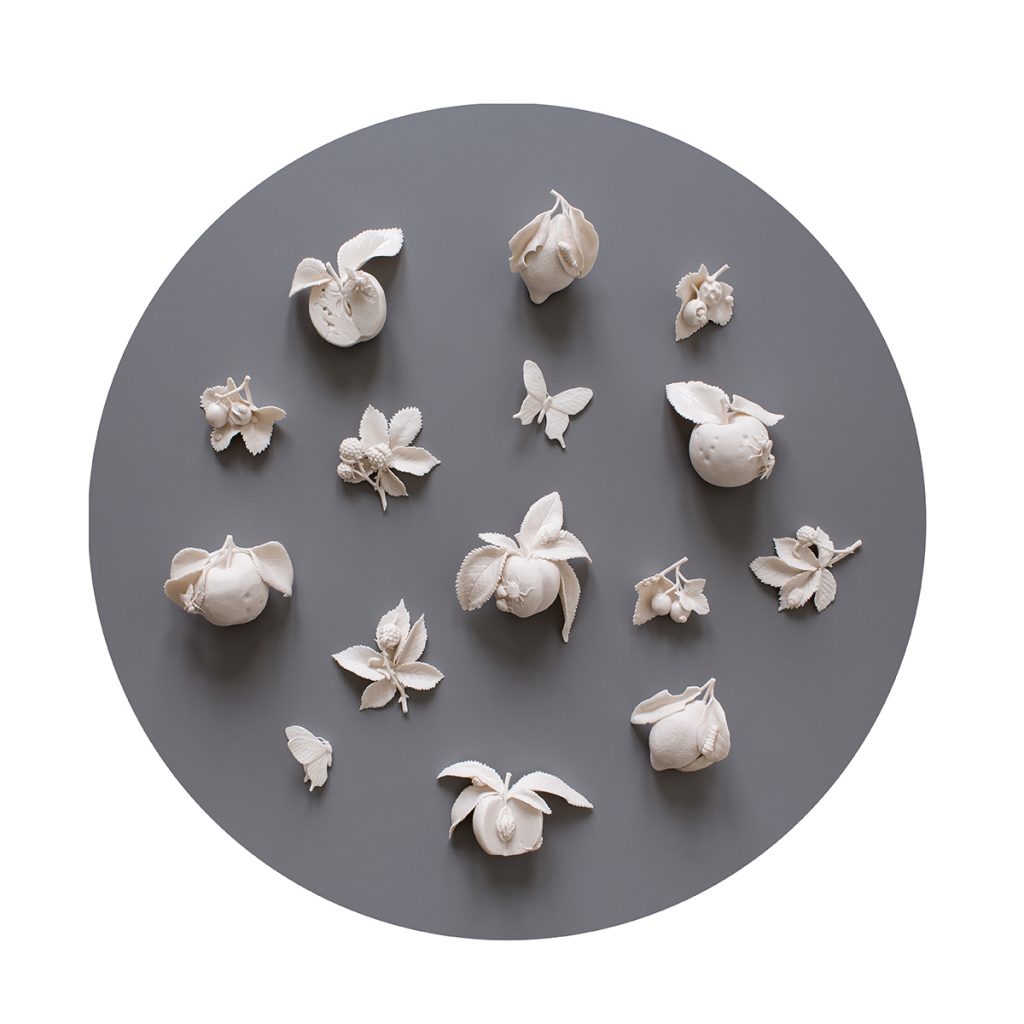
Which sciences relate to your art practice?
Conservation biology relates in terms of the stories I’m motivated to tell with my sculptures. I find the complexity of natural forms both inside and out beautiful and interesting, and I think biodiversity loss and climate change is a multifaceted tragedy worth exploring this way. Visuals can communicate so much yet still be open to multiple and contradictory interpretations. So even though my starting point might be the introduction of the myxomatosis virus to control pest rabbits or pollution in lakes affecting the sexual organs of alligators, the viewer might create a completely different narrative to explain the images. On a more practical level, when sculpting, probably anatomy. I don’t have formal training, but did take a class in figure sculpting that focused on human anatomy. I study scientific drawings, especially of skeletal systems, and both professional and snapshot photographs of the animals I’m sculpting. Sometimes, I’ll watch online YouTube videos of animals to see how they move and get a sense of their posture at rest. Also botany because scientific drawings of plants are also essential to my work.
“I find the complexity of natural forms both inside and out beautiful and interesting, and I think biodiversity loss and climate change is a multifaceted tragedy worth exploring this way.”
Kate MacDowell
What materials do you use to create your artworks?
Porcelain water-based clay for most pieces. I usually build a piece solid by hand and then cut it open and hollow everything out to 1/4″ thickness. I build small forms like flowers petal by petal, and amass a collection until I’m ready to add them to the larger piece. Until recently, I rarely used or made molds, although I do pick up texture by rolling clay over little leaves, for example. Often I’m dealing with components such as fly legs that are too small to hold with my fingers. In those cases, I use a tiny damp paintbrush tip, which the leg will cling to, and touch it into place on the sculpture. I bisque my work, glaze it with clear glaze in parts, then fire to cone 5, which is about 2180 Fahrenheit in a kiln.
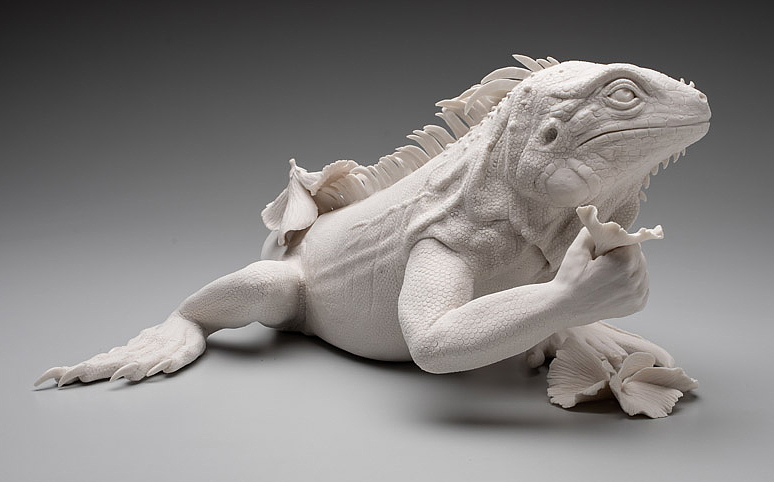
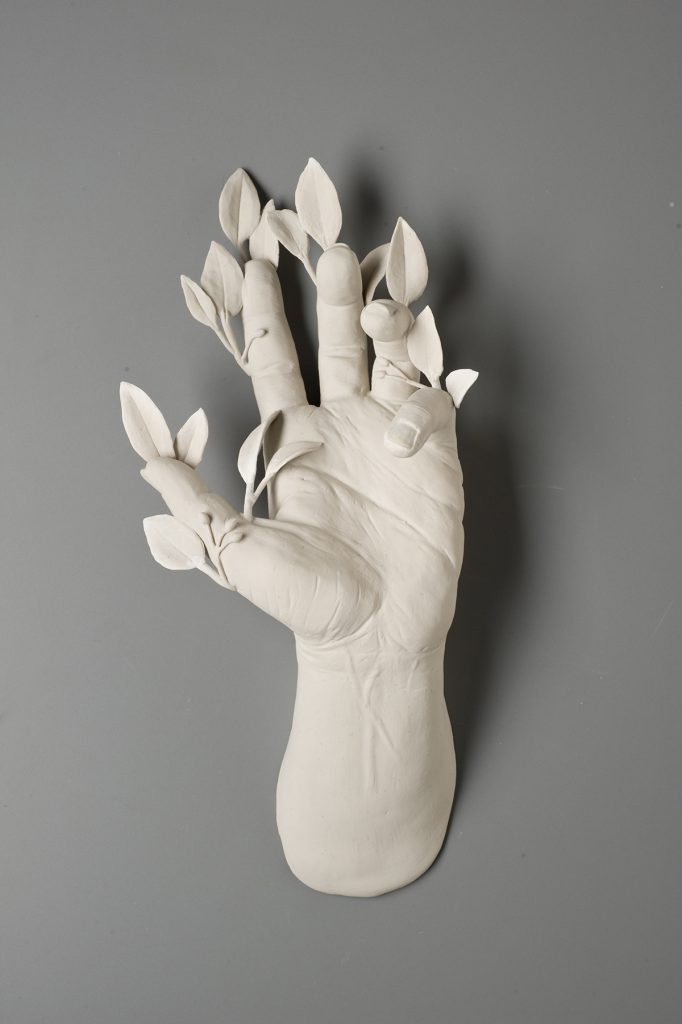
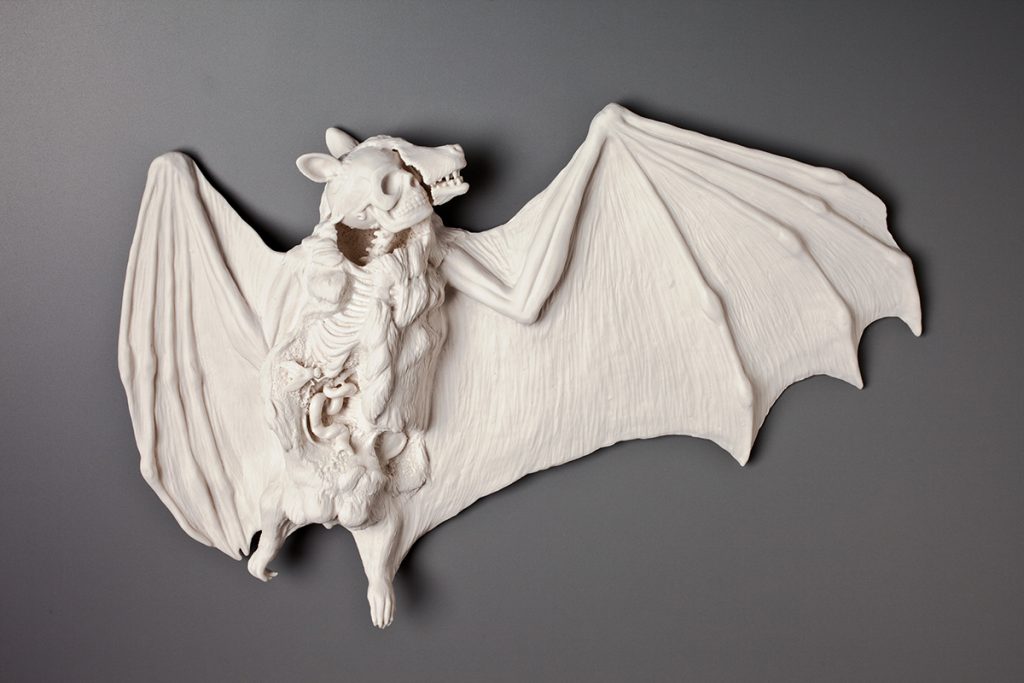
Artwork/Exhibition you are most proud of:
I have several favorites, but most recently, I really enjoyed making a series of squares titled this patch of ground. I wanted to return to close observation of natural objects as a way to spotlight these seemingly trivial and overlooked small bits of our environment and to memorialize random patches of ground as precious objects. I was particularly interested in the first weeds or new growth on bits of lawn or cleared dirt around my suburban neighborhood and the way that plant life and weed seed disrupted our carefully ordered outdoor spaces. The city I live in, Portland, has a city park that is a two foot square circle, and I liked that idea of valuing the micro landscape in the way we value the macro one. I “surveyed” then photographed 6″ plots of land and then strove to replicate them exactly by hand, down to the leaf, pine needle, grass blade, etc. I created several of these and found the sculpting one of the more difficult and rewarding experiences I’ve had. There is so much information to be found in such a small area.



“I wanted to return to close observation of natural objects as a way to spotlight these seemingly trivial and overlooked small bits of our environment and to memorialize random patches of ground as precious objects.”
Kate MacDowell


Which scientists and/or artists inspire and/or have influenced you?
Several contemporary artists working at the intersection of art and animal conservation, but also baroque marble sculpture and photographs I come across online, from road kill to scientific images of frog deformities. Probably the scientist whose work most struck a chord with me as to the psychological content of my pieces is the environmental philosopher Glenn Albrecht. I create pieces which explore my own feelings of solastalgia. This word, which he coined, describes the palpable sense of dislocation and loss that people feel when they perceive changes to their local environment as harmful—it’s a form of psychic or existential distress caused by environmental change.
SciArt is an emerging term related to combining art and science. How would you define it?
I don’t know quite how to define it or if I would consider myself a typical SciArt artist because my work uses traditional materials and is narrative and figurative. I deal more with the surreal than the concrete. I have heard the term ‘Anthropocene Art’ which I feel a kinship with because of the subject matter I explore and the central role of ecology and the impact of humankind.
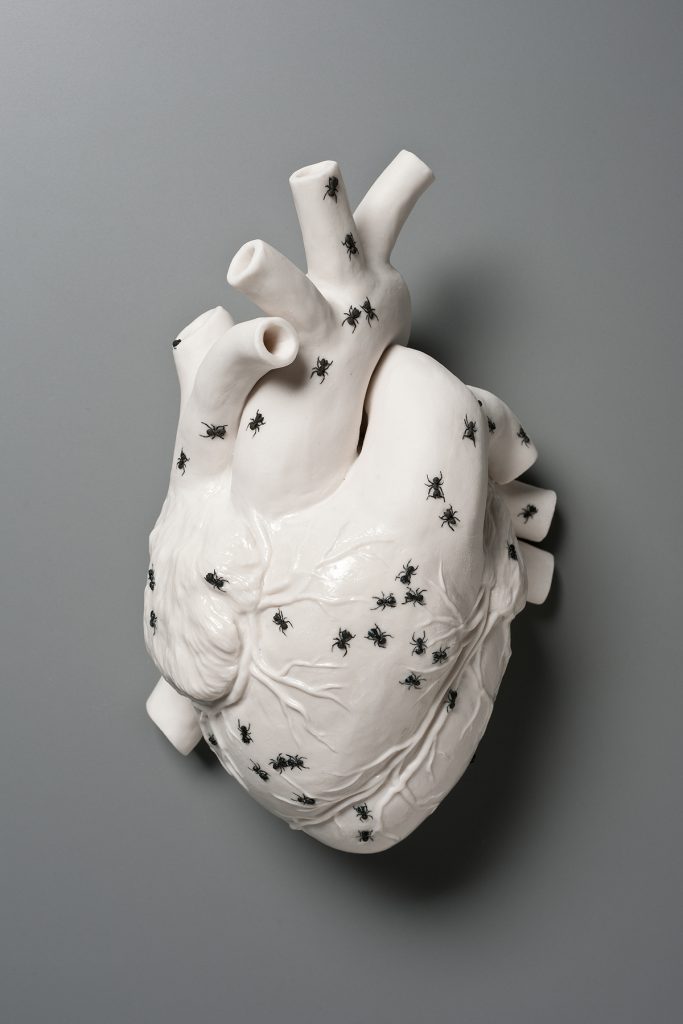

For more by Kate MacDowell, visit her website, Instagram, or Facebook.
Share this Post

